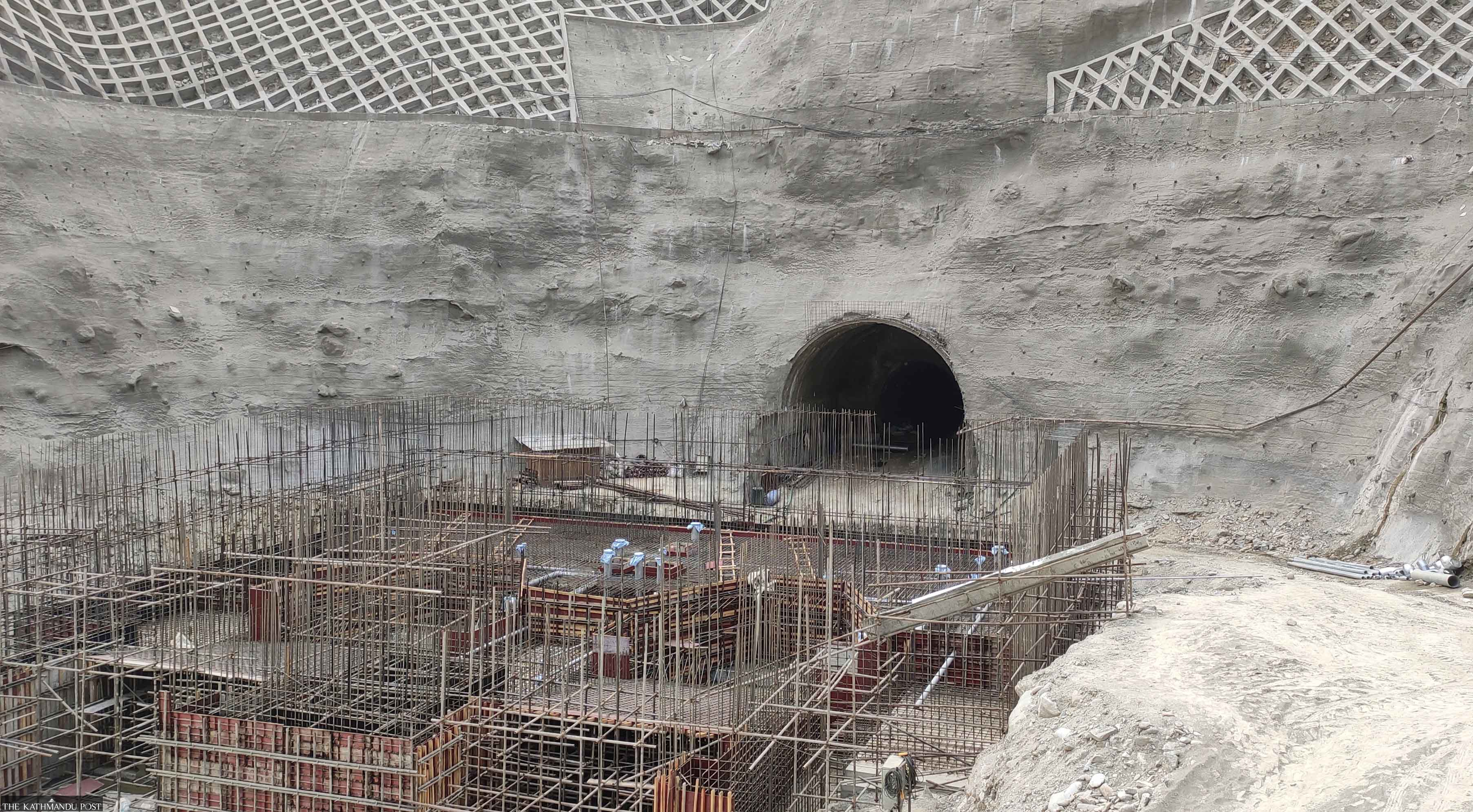
The Central Bureau of Statistics has painted a glowing picture of the Nepali economy despite a whole host of pessimistic indicators, prompting economists to call its cheery prediction “supercharged growth”.
Unusually heavy rains last October left a trail of ruin in the farm sector. Hiring by the restaurant and hospitality industry is still depressed. Industries are facing electricity problems again. High inflation has eroded the Nepali people's purchasing power. A huge investment gap in infrastructure remains. The government has shrunk the budget because it can't spend the allocated funds.
Even so, Nepal's official number cruncher said on Thursday in its preliminary report that the economy is projected to grow 5.84 percent in the current fiscal year ending mid-July without explaining how that would happen.
Economists have questioned the optimistic economic growth data that has been released just before Nepalis go to the polls.
“A layman can understand the health of the economy right now,” said economist Bishwambher Pyakuryal. “That’s artificially designed data.”
“The economy is depressed. The government is desperate. As a result, stringent measures have been imposed to curb imports, bank lending is slow and investment is weak, and the government is stopping children from going to school, traders from doing business and government employees from going to full duty to save fuel,” he said.
“Looking at all the economic indicators and current market situation, it is hard to conclude that Nepal’s economy is doing well at the moment. The economy has become just data. This is face-saving data ahead of the election,” said Pyakuryal. “What makes the statistical body confident that a near 6 percent growth rate is achievable? They should be careful.”
The statistical bureau said that growth had been helped by mining and quarrying, electricity and gas, construction, wholesale and retail trade, accommodation and food service activities, education and financial and insurance activities.
The official growth estimate is higher than the forecasts made by the World Bank and the Asian Development Bank. The World Bank and the Asian Development Bank have projected Nepal's economy to grow by 3.7 percent and 3.9 percent respectively.
The government has targeted a growth rate of 7 percent.
“It doesn’t feel like we are growing at 6 percent. We have estimated that it may expand by 4 percent and not more than that,” said economist Keshav Acharya.
“I doubt the statisticians took account of the consumer goods sales in urban and rural areas, the job prospects immediately after Covid-19, the depressed growth of the agriculture sector and the poor performance of the tourism industry to get a better understanding of the ground realities,” said Acharya.

The government has formally banned imports of at least 10 goods, which it considers luxury or non-essential, in a bid to stop the country’s foreign exchange reserves from going down further. POST FILE PHOTO
“Initially, we thought the growth was due to the base effect, compared to last year’s weak numbers. But it appears that is not the case.”
He said that energy shortages in the industrial sector would further impact manufacturing in the coming days.
Ishwari Prasad Bhandari, director of the Central Bureau of Statistics, said that the growth estimate is based on actual data of nine months and forecasts for the next three months.
"The three months' estimates are based on the assumption that everything will be normal. If everything remains the same, the economic performance of all economic sectors will be the same as in a normal year.”
Bhandari says the estimate is also based on the assumption that the status of the Covid-19 pandemic will not change in the next three months and there will be no shocks.
Computed on the basis of this growth rate, Nepal's gross domestic product is estimated to reach Rs4.85 trillion at the end of the fiscal year in mid-July.
Ram Kumar Phuyal, member of the National Planning Commission, says the country is obviously facing an external shock and there is pressure, but the economy is not in a bad shape.
A significant chunk of bank credit has gone to pay for imports, leaving the country short of cash to finance economic activities to support an economy devastated by Covid-19, according to Nepal Rastra Bank.
The central bank said that alongside increasing import loans, remittances also dropped creating challenges to external sector stability.
The external sector of the economy covers sectors including export and import, remittance, foreign direct investment and foreign aid.
“The problems arising in the external sector are also creating difficulties for the domestic sector of the economy,” said Phuyal.
The government has formally banned imports of at least 10 goods, which it considers luxury or non-essential, in a bid to stop the country’s foreign exchange reserves from going down further.
The ban went into effect on Tuesday and will last until the end of the fiscal year in mid-July. A notice to this effect was published in the Nepal Gazette.
The Central Bureau of Statistics has estimated that the per capita gross national income or per capita income may rise to $1,381 from $1,196 in the last fiscal year.
The per capita GDP or the income of a person may reach $1,372, up from $1,191 in the last fiscal year. The per capita income means an average annual income of a person.
Economists say that the slowdown is especially pronounced in rural areas, which suffered from unseasonal October rains.
Farmers across the country were upbeat about reaping their first bumper harvest because the monsoon rains had been good, and chemical fertiliser was available during the planting season. But heavy downpours and fierce winds in October, when the paddy in the fields had ripened, flattened their standing crops.
Adding to the farmers' woes, state-owned Food Management and Trading Company and traders refused to buy their paddy crops pointing to quality issues.
Farmer Ram Kamal Chaudhary from Marchbari Rural Municipality in Lumbini said his income was slashed because of the flood.
Crop losses due to the flood may have caused imports to soar. The statistical body has estimated that imports will reach Rs2 trillion by the end of the fiscal year despite government measures to curb them.
“That will fuel inflation and squeeze the economy further,” said Acharya.
But officials at the statistical body say that increased imports are good for the economy too.
According to the report, the final consumption expenditure or money spent by Nepalis on consumption will reach Rs4.41 trillion, which is 90.7 percent of the total GDP.
“That will enable people to save 9.3 percent of their income, which is so far good,” said Bhandari, the director of the Central Bureau of Statistics.













